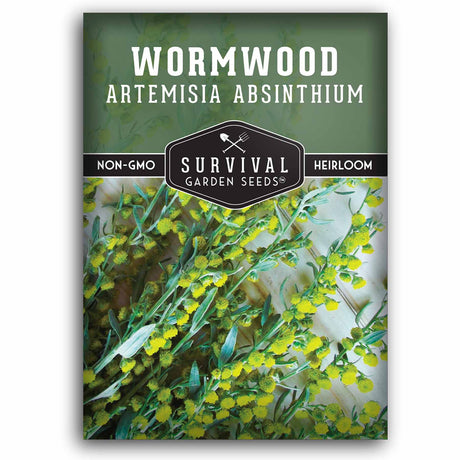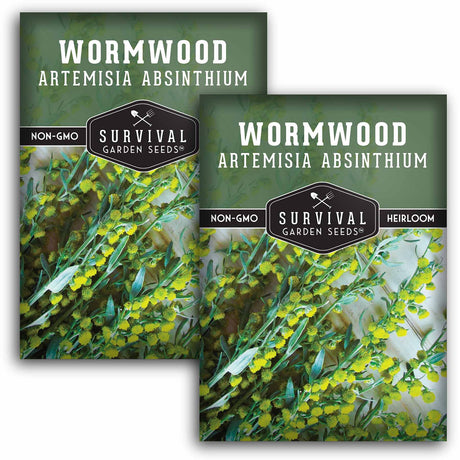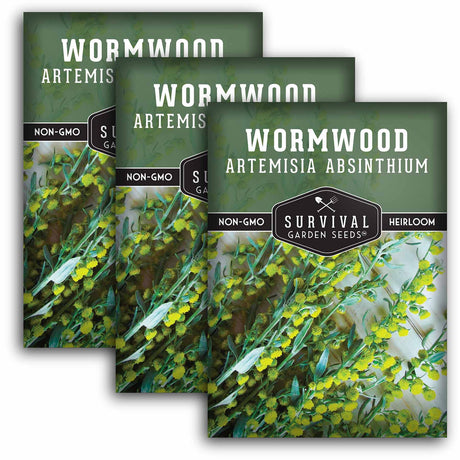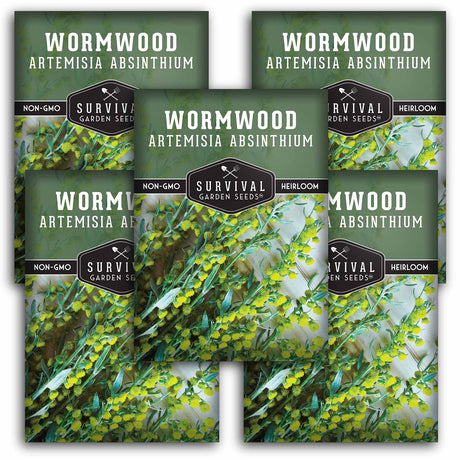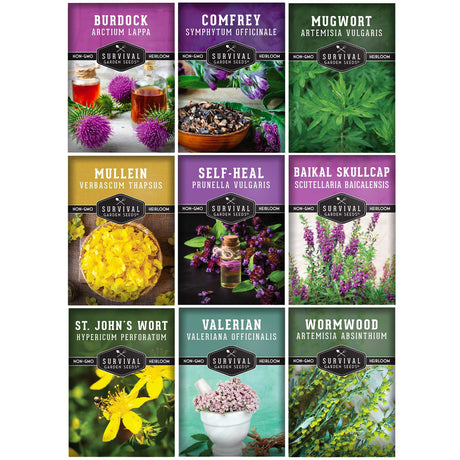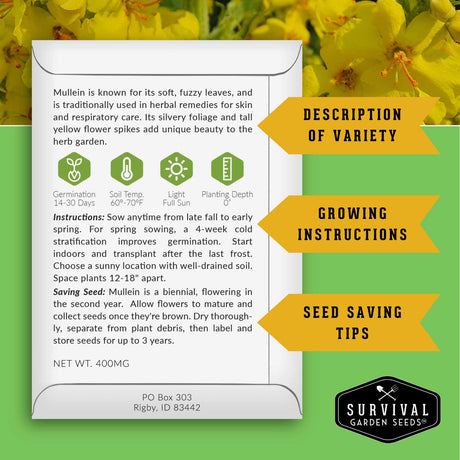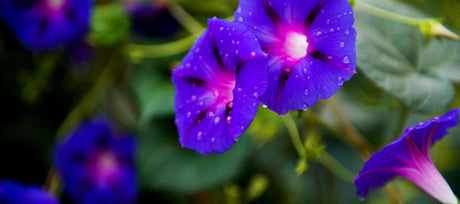
Morning Glory Flower Growing Guide: Cultivating Beauty from Seed
Morning Glory is a beloved annual plant that gets its name from its colorful trumpet-shaped blooms that open in the cool hours of the morning. It is a quick-growing vining...
Free Shipping on US Orders of $20+ SHOP NOW
Wormwood seeds produce a hardy aromatic herb valued for centuries for its medicinal properties and distinctive fragrance. Wormwood, or Artemisia absinthium, is recognized for its silvery to green leaves with a bitter taste. This plant thrives in sandy soil and enjoys direct sunlight for most of the day. Wormwood can withstand dry conditions well. It’s an excellent choice for low-water gardens and is also a natural pest repellent.
Wormwood Seeds - Artemisia Absinthium
Survival Garden Seeds offers heirloom Wormwood seeds, selected for their high germination rates. The package includes detailed instructions for sowing and caring, making it convenient for anyone to enjoy growing this unique herb.
Wormwood is scientifically called Artemisia absinthium. This is a perennial plant, originating from regions of Asia, Europe, and North parts of Africa. These days, it is grown all over the world. Wormwood herb grows successfully in USDA hardiness zones 4 to 9, usually reaching 3 to 4 feet in height. With finely divided leaves and small yellow flowers, this herb is known for its bitter taste and potent medicinal properties. Often used in herbal remedies, it is mostly recognized as a key ingredient in absinthe production. NOTE: fresh wormwood does contain the plant compound thujone which can be toxic and cause hallucinations or seizures in large amounts. Consult with an expert for advice on using wormwood as a medicinal herb, as overdosing can cause serious side effects.
Start Wormwood seeds indoors, 8 to 10 weeks prior to the last frost. Sow seeds on the soil surface and press them lightly into the soil. Moist the soil regularly, until the germination process begins. Keep the temperature between 65 and 70° F during this time. In two to three weeks, the seeds will start to sprout. When seedlings grow a second set of true leaves, you may transplant them outdoors. Space the plants 18 to 24 inches apart.
Once rooted, a Wormwood plant requires very little maintenance and can become invasive if not well maintained. Water the plants sparingly. Allow the soil to dry out before each watering. They are tolerant to drought. Adding mulch at the base of the plant will be beneficial by promoting soil moisture and suppressing weeds. Wormwood enjoys occasional pruning to maintain its shape and promote bushier growth. Growing in containers is highly advised due to Wormwood’s aggressive nature. Harvest in late summer before the leaves and flowers reach full bloom as this is when the plant has the most potent medicinal properties.
Growing Wormwood in your garden will have many benefits, including aromatic foliage, medicinal uses, and natural pest-repellent properties. This hardy plant can also be used in many herbal preparations. It is a versatile herbal garden perennial.

Morning Glory is a beloved annual plant that gets its name from its colorful trumpet-shaped blooms that open in the cool hours of the morning. It is a quick-growing vining...

Discover borage plant uses, how to grow it from seed, and why this bee-friendly herb is a must-have for every garden.
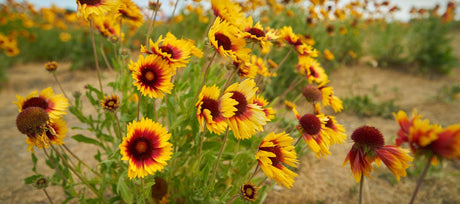
Vibrant blanket flowers offer color, heritage, and benefits. Learn to grow Gaillardia from seed, plus care tips and history of this hardy native wildflower.

Learn comprehensive tips for growing beefsteak tomatoes from seed to harvest. Get big, juicy tomatoes with our expert advice!

Basil is an herb garden favorite that’s often associated with Italian cuisine, but there is so much more to explore. Basil isn’t just one plant — there are many different...

Crimson clover is a beautiful, easy-to-grow cover crop that brings color, charm, and real benefits to your garden. From attracting pollinators to improving soil health, this little plant works hard...

The fiery kick of Thai peppers is a classic feature of Southeast Asian cuisine, adding zesty heat to dishes. While they may sound exotic, these little peppers are relatively easy...

If you want to bring fragrance, beauty, and pollinators to your garden, Consider growing Alyssum. Perhaps more commonly called Sweet Alyssum, this plant is a short-lived perennial that produces mounds...
